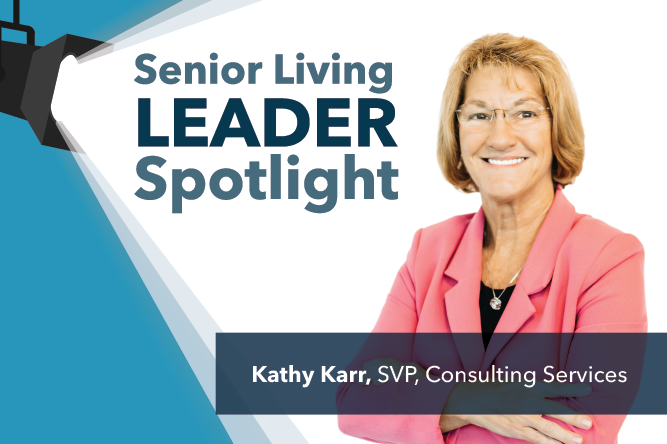
In 2020, the regulatory and licensure requirements of assisted living (AL) changed drastically in Minnesota. The Assisted Living Licensure law under Minnesota Statutes, chapter 144G was passed by the 2019 Minnesota Legislature and updated as part of the Legislature’s 2020 7th Special Session. The law established regulatory standards governing the provision of housing and services in assisted living facilities and assisted living facilities with dementia care to help ensure the health, safety, well-being, and appropriate treatment of residents. It also authorized the commissioner to adopt rules for all assisted living facilities that promote person-centered planning and service delivery and optimal quality of life, and that ensure resident rights are protected, resident choice is allowed, and public health and safety is ensured.[1]
This has brought greater focus on not only licensure but also regulatory activity, quality measures, and reporting tools, such as the recent Minnesota Department of Human Services (MN DHS) and Minnesota Board on Aging “Assisted Living Report Card” (MN AL Report Card). Policies such as this indicate a trend towards increased scrutiny of AL communities and the quality of care they provide. The first round of the MN AL Report Card results for resident quality of life (QOL) and family satisfaction ratings was launched in January 2024 for over 450 AL facilities.[2]
Presently, the MN AL Report Card reports on these qualitative metrics for only about 20 percent of the state’s 2,200+ licensed assisted living facilities.[3] Over the next year, more communities will be added to the report card, and in early 2025, star ratings based on state survey results for resident health and safety will also be included. With the addition of this tool, potential residents and their families will be able to use this data to vet AL communities and help consumers make their decisions on where to go.
Understanding what the MN AL Report Card includes, as well as how communities can prepare and improve on these metrics before survey results are posted, is of the utmost importance in order to remain competitive in an evolving AL landscape, especially if other states follow suit with AL reporting tools.
Resident Quality of Life and Family Satisfaction Ratings
In conjunction with the University of Minnesota, the Minnesota DHS engaged statewide stakeholders and determined the two most important areas to address in the qualitative survey were resident QOL and family satisfaction. Between 2022-2023, there were 12,091 face-to-face resident surveys conducted at 467 communities.
The resident QOL survey includes 47 questions separated into the following categories:[4]
- Staff: (i.e., “How often do the people who work here try to get to know you?”)
- Environment: (i.e., “How often is it quiet enough for you to sleep here?”)
- Food: (i.e., “How often do you look forward to mealtimes here?”)
- Engagement: (i.e., “How often are there things to do here on the weekends that you enjoy?”)
- Autonomy: (i.e., “How often do you spend as much time outdoors as you would like?”)
- Culture: (i.e., “How often are the people who work here respectful of your culture?”)
- Security: (i.e., “How often do you feel comfortable voicing a complaint or concern?”)
- Finances (i.e., “How often do you believe you are getting value for your money here?”)
- Overall Satisfaction (i.e., “Overall, what grade would you give [Name of Facility], where A is the best it could be and F is the worst it could be?”)
While word of mouth and direct referrals will likely remain the most influential tool for seniors and their families, the ability to see how large groups of residents rate a community will also be of importance in ensuring your community meets its occupancy goals.
The family satisfaction survey includes most of the above categories, but it also addresses choice, needs, and housekeeping. As with the resident experience, data obtained from family surveys will be influential in how a community ranks on the report card.
State Inspection Results
Beginning in early 2025, MN DHS will incorporate quality ratings into the report card based on state licensure surveys that are required at least once every two years. The ratings will be broken into three categories—resident health, safety, and staffing—and will be updated on a quarterly basis in 2025. The ratings will range from 1–5 stars for each category. MN DHS plans to publish new ratings each time an AL community is surveyed by the Minnesota Department of Health.
MN DHS notes that it could take up to six months for the report card to reflect the new results.[5] Therefore, negative survey ratings would stay on the MN AL Report Card for up to two years or more, which is the score potential residents and their families will see until the next survey is completed. Many providers have been caught off guard with the new regulations in their first survey since the new rules given the drastic changes. It is important that providers are aware of and knowledge about the regulation, continuously monitor quality and compliance, and be laser focused on post-survey activity.
How HDG Can Help
Health Dimensions Group (HDG) has nearly 25 years of senior living and care experience—owning, operating, and providing management and consulting services for a vast array of partners. HDG provides management services to 54 senior living and care communities in seven states—including independent living, assisted living, memory care, skilled nursing facilities, and life plan communities—so we know the regulatory challenges our own communities face and are ready to help you with yours.
If you find yourself struggling with your state licensure surveys—including clinical, life safety code and emergency preparedness planning—please contact HDG at info@hdgi1.com for a Positive Review and Evaluation Process (PREP) mock survey, in which a wide range of activities—including nursing, recreation and activities, staffing, administration, dietary and meal service, abuse prevention, medication administration management, infection prevention and control, and QAPI—are assessed in order to help reduce your facility’s risk for deficiencies and improve your star ratings on the Minnesota AL Report Card. If you have already faced a challenging survey, we are available to assist in returning your community to full compliance and implementing tools to remain in compliance.
[1] Minnesota Department of Health. “Assisted Living Law, Chapter 144G.” https://www.health.state.mn.us/facilities/regulation/assistedliving/law.html ; [2] Minnesota Department of Human Services. “Assisted Living Report Card.” https://mn.gov/dhs/partners-and-providers/news-initiatives-reports-workgroups/aging/assisted-living-report-card/assisted-living-reports.jsp ; [3] University of Minnesota, School of Public Health. “Minnesota’s New Assisted Living Report Card is Now Available.” https://www.sph.umn.edu/news/minnesotas-new-assisted-living-report-card-is-now-available/; [4] Biostatistical Support and Analysis Center (BDAC) at the University of Minnesota. “Building Resident Quality of Life and Family Satisfaction Measures for the Minnesota Assisted Living Report Card.” https://mn.gov/dhs/assets/building-resident-quality-of-life-family-satisfaction-measures-mn-ap-report-card_tcm1053-608985.pdf ; [5] Minnesota Department of Human Services. “Assisted Living Report Card Frequently Asked Questions: Minnesota Department of Health Survey Ratings.” https://mn.gov/dhs/assets/mdh-survey-ratings-frequently-asked-questions_tcm1053-627624.pdf







